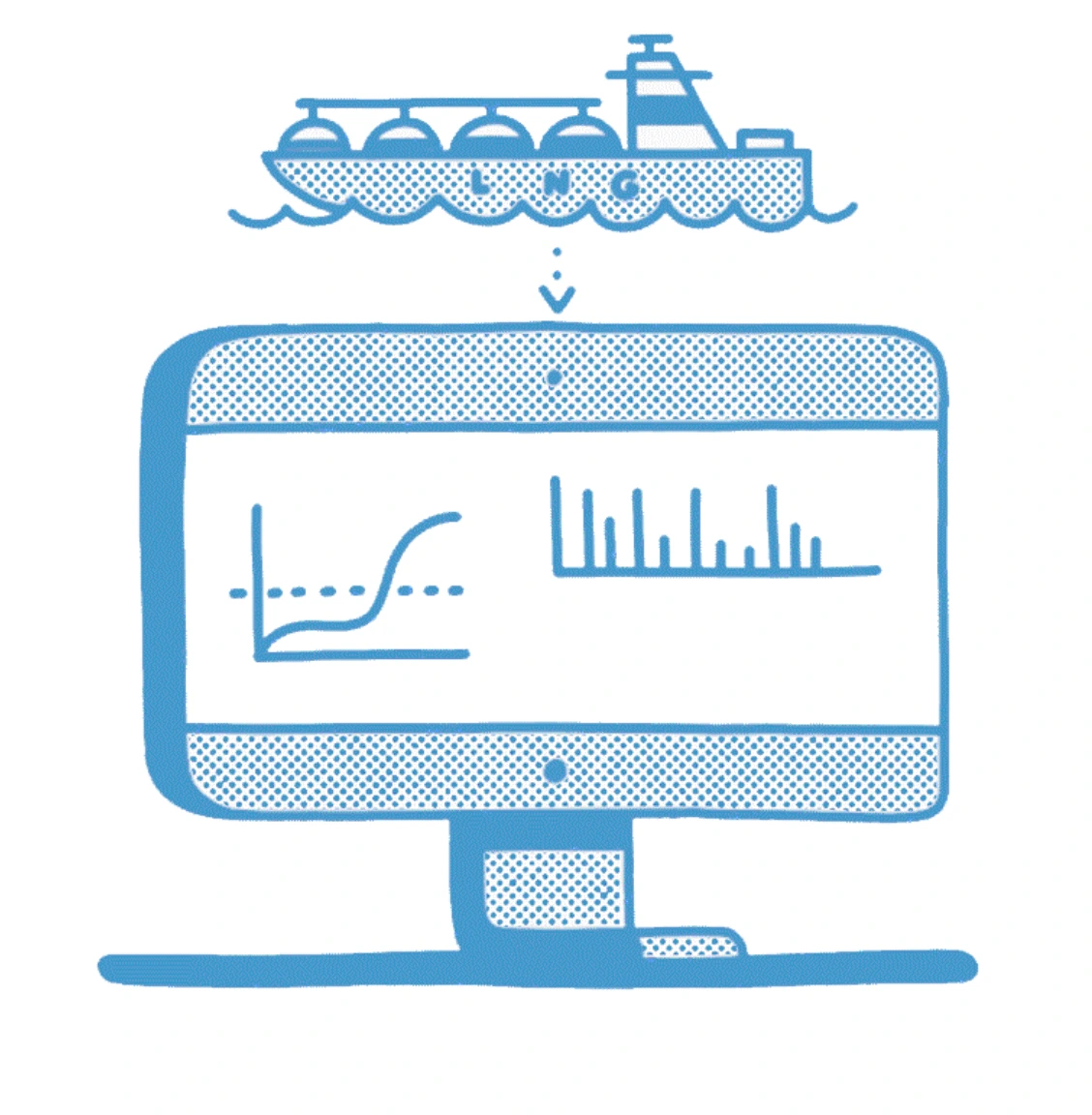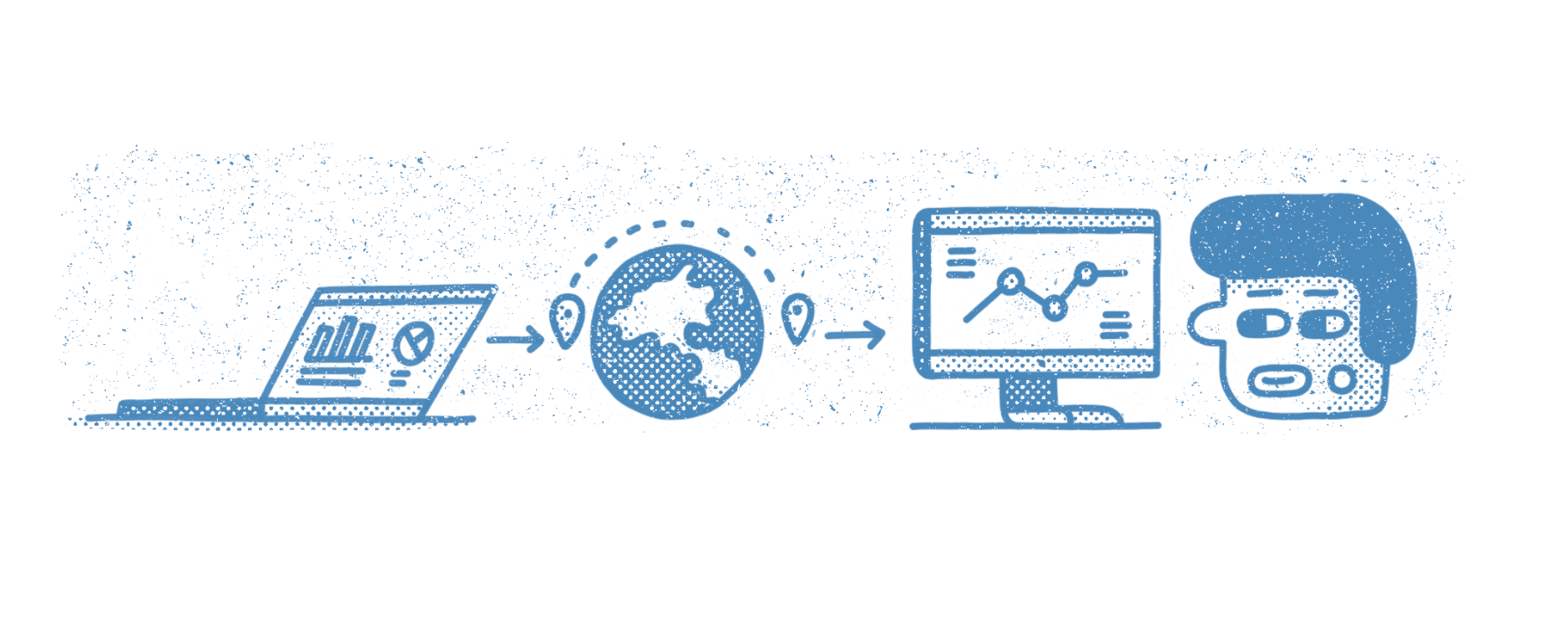Partner-operated assets
Quickly and easily process partner production data using automation, no matter the format. Or undertake asset-specific calculations, like deferments and forecasting.

Track. Measure. Consolidate.
Many oil and gas companies have non-operated interests in production assets (in some regions, referred to as "partner operated assets") and/or transportation infrastructure. They might also use third-party infrastructure, such as transmission pipelines or cargo terminals, to transport their hydrocarbon products. The Operator provides regular reports on the operation of the partner operated assets and, potentially, on its development plans. Owners and Transporters need to track the data provided by their operating partners and consolidate these with data on the rest of their operations. If they are a user of a transportation asset, they may need to submit nominations, production information and forecasts to the Operator.
Data collection, validation and management
Transporters of oil and gas products using third-party infrastructure will need to capture data such as:
- Measurements – delivered volumes and qualities
- Samples and laboratory analyses
- They will also need to submit data to third-party systems
- Nominations
- Production and product quality
- Forecasts
They will receive from the Operator confirmed and/or allocated figures for the quantity and quality of products received into the system, and stored or transported, by the Operator.
Non-operating Producers will typically receive production data and production forecasts from the operating partner via email, in a layout designed by the Operator.
EnergySys allows data to be entered directly into the screens, posted to the system as email attachments, retrieved from other systems automatically via Connectors, or uploaded from files. Files can be in Excel, CSV or text format, and you can load them in bulk by providing a zip file. The layout of these upload files is not specified by the system, and the import process can be configured to read almost any layout and import the data to the system. For automated interfaces with a SCADA system or data historian, data can be uploaded via a web services interface.

Planning and forecasting
Transporters using third-party transportation systems will need to forecast their throughput requirements well into the future. Typically, they will need to reserve transportation capacity in advance, placing formal nominations to the Operator on timescales dictated by their transportation agreement. They need to be able to transmit this information to the Operator efficiently and in a timely manner. They will also need to keep the Operator updated as their future requirements change.
If their transportation agreements allows trading and swapping of cargos, the Transporter will need to keep track of each transaction in which he is involved and reconcile this with the Operator’s reports.
In contrast, non-operating Producers are provided with production forecasts by their operating partners which they need to integrate into their broader asset planning and forecasting. This data is typically provided in a format governed by the Operator which needs to be automatically uploaded and stored.

Calculations
Transporters need to be able to forecast their transportation requirements, based on short-, medium- and long-term forecasts of production. They might also want to check the allocation calculations performed by the Operator, as well as trades and swaps, and reconcile these figures with their internal records. If the Operator is storing product within the network, then the Transporter will expect to receive data on stocks to which he is entitled, and to be able to monitor this against his own estimates.
Similarly, non-operating Producers may need to verify the figures received from the Operator against their own production expectations and compare the performance against the Operator’s forecast.

Commercial
There will be commercial agreements governing how a Transporter may use the third-party transportation infrastructure, how he requests capacity, and how he is charged. These agreements can include complex arrangements for capacity restrictions, spot cargos, pricing regimes, and tariffs. The product that is moved and stored in the network will be owned by more than one company, meaning that product ownership must be tracked. The terms of these agreements differ widely and are usually very specific to the asset in question.
The EnergySys Cloud Platform allows you to define logic to meet your particular requirements.

Reporting
The data stored and generated in the system is used for daily, monthly and annual reporting. These reports are likely to cover:
- Commercial allocation of liftings and inventories
- Shipping and trucking documents
- Invoices
- Environmental impact
- Regulatory submissions
- Performance against plan, and forecasts of future operations
Data can be exported via our web-services interface, which provides the mechanism to interface with almost any third-party system, or transmitted by email as an attachment. Attached reports can be configured to suit the layout requirements of the Operator.
Automation
Many of the activities described above – data receipt and validation, calculations, report creation and distribution, for example – can be automated, freeing the team to assess performance and identify opportunities for improvement. Automation of any sequence of tasks is straightforward and can be configured to suit your specific business processes.
